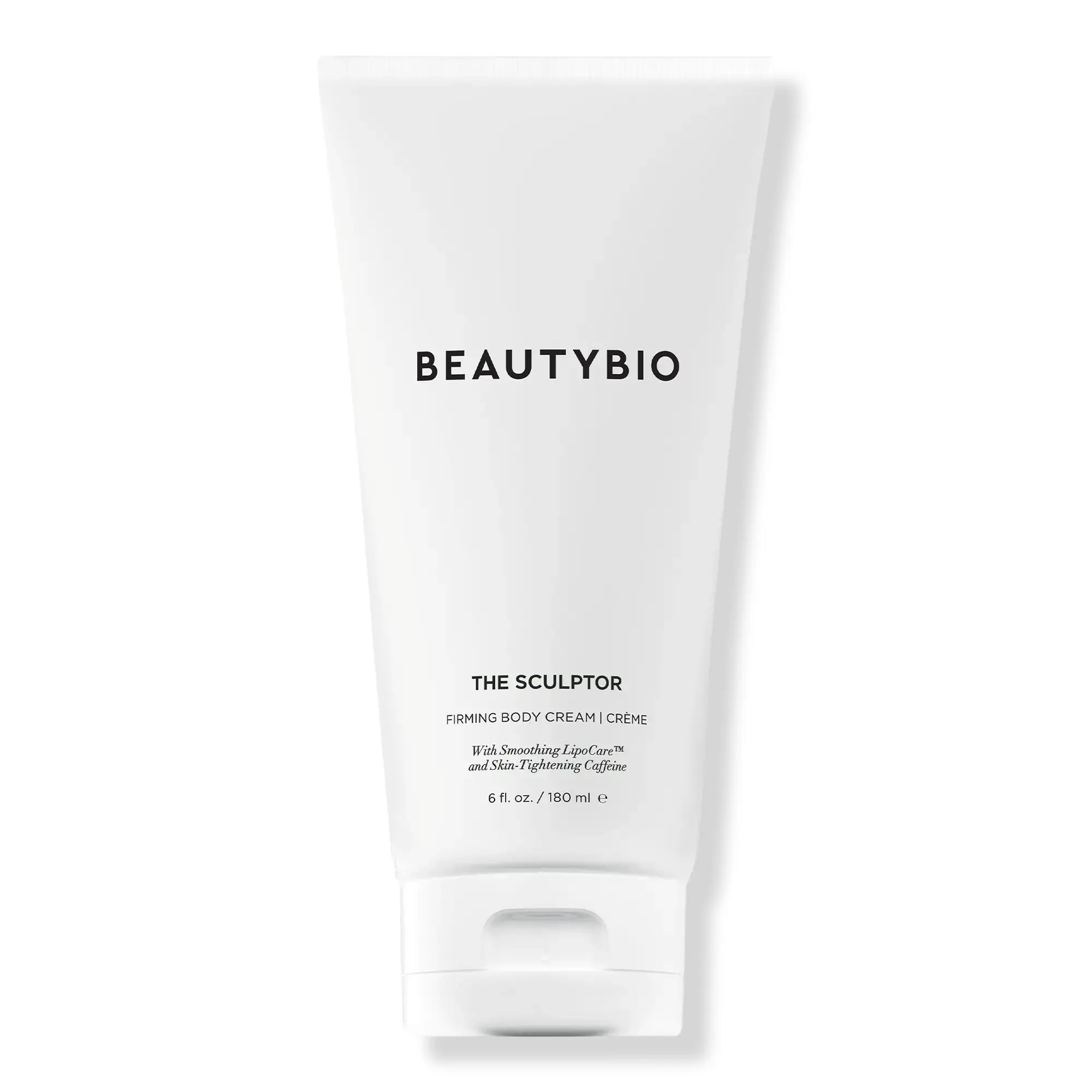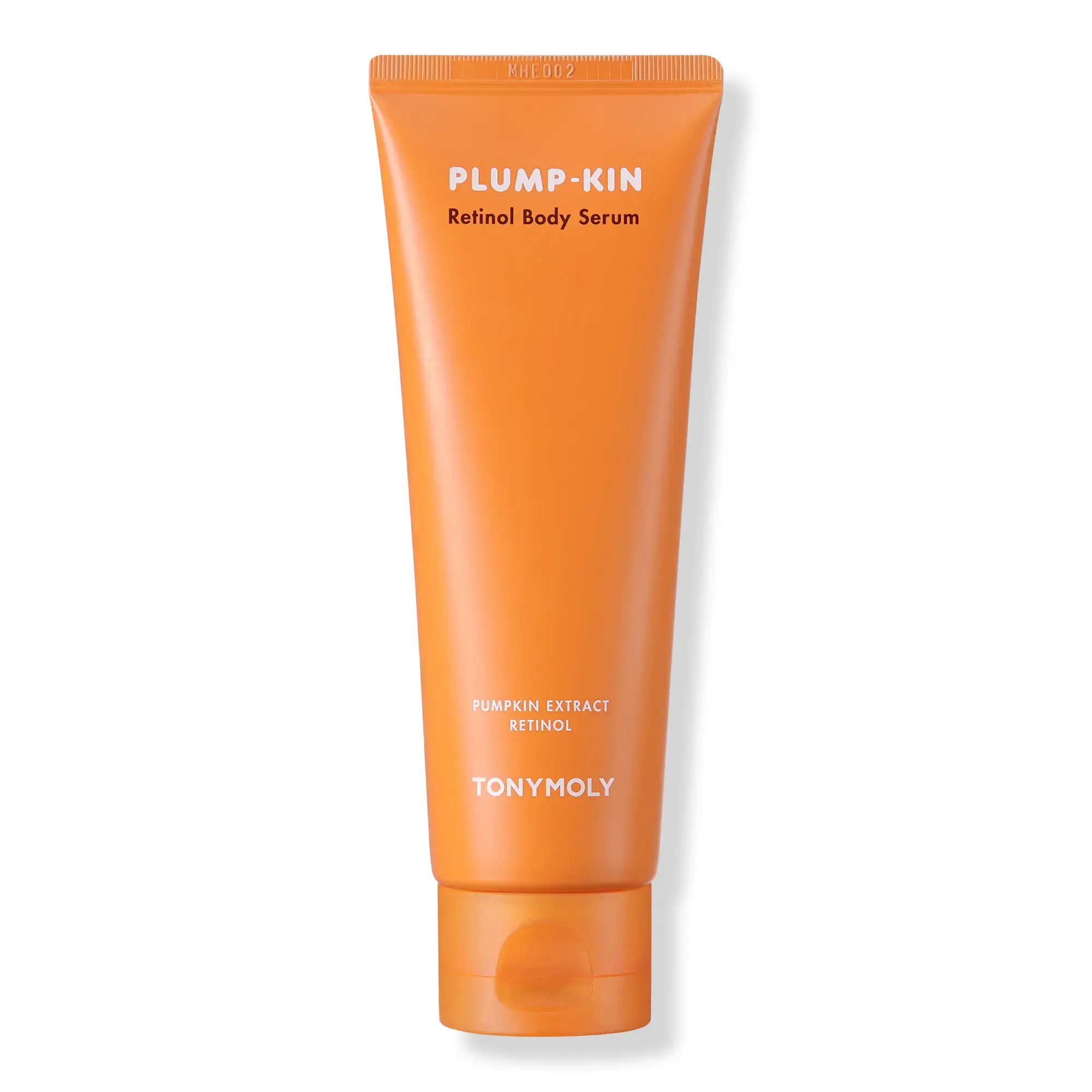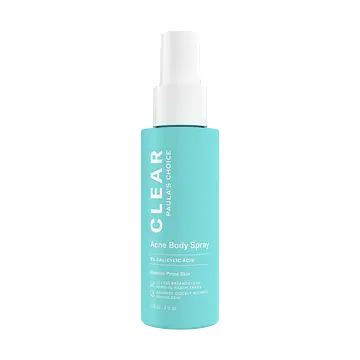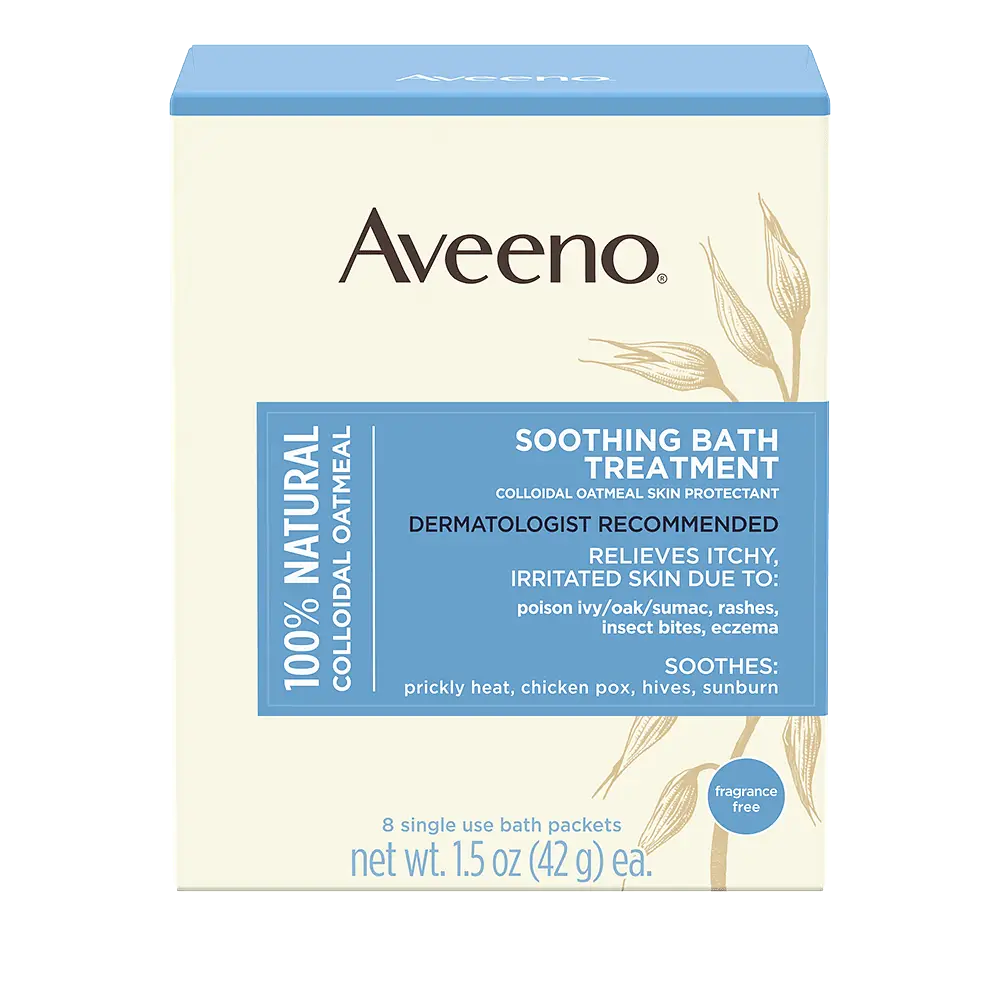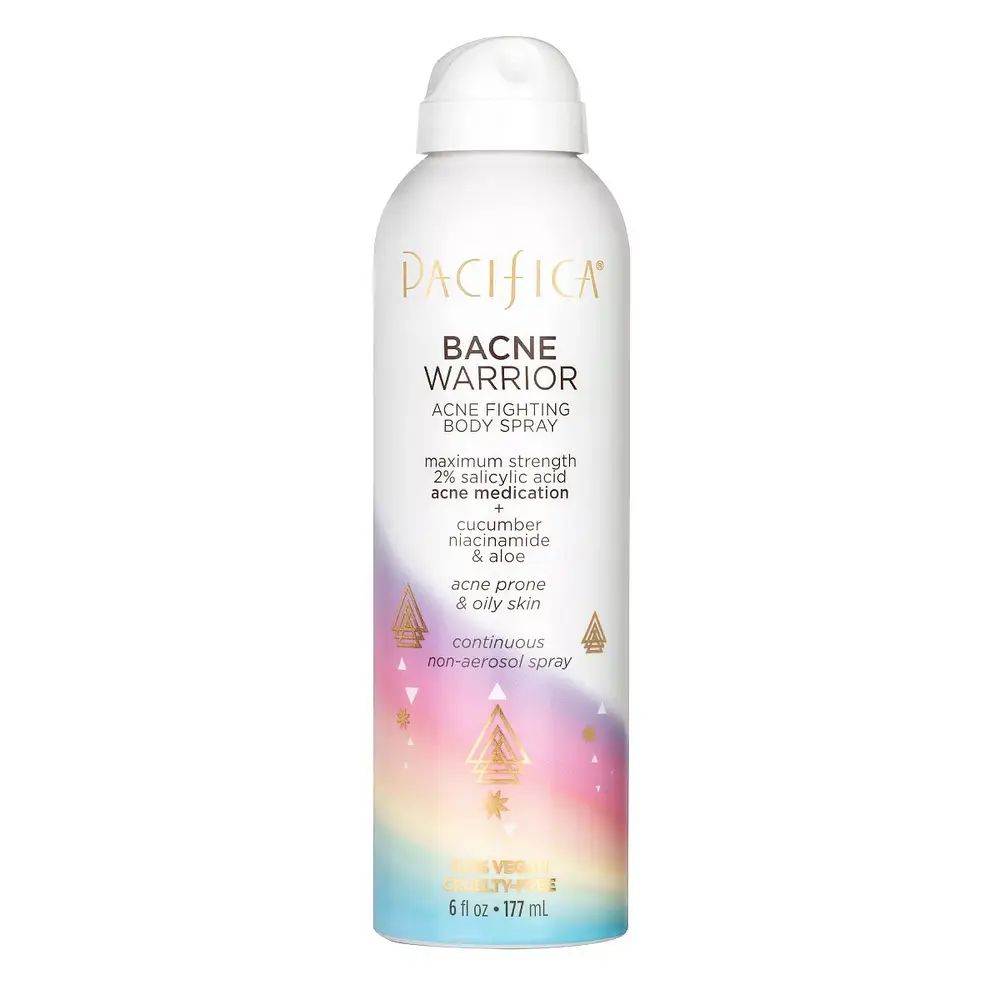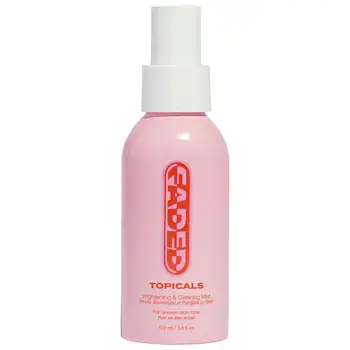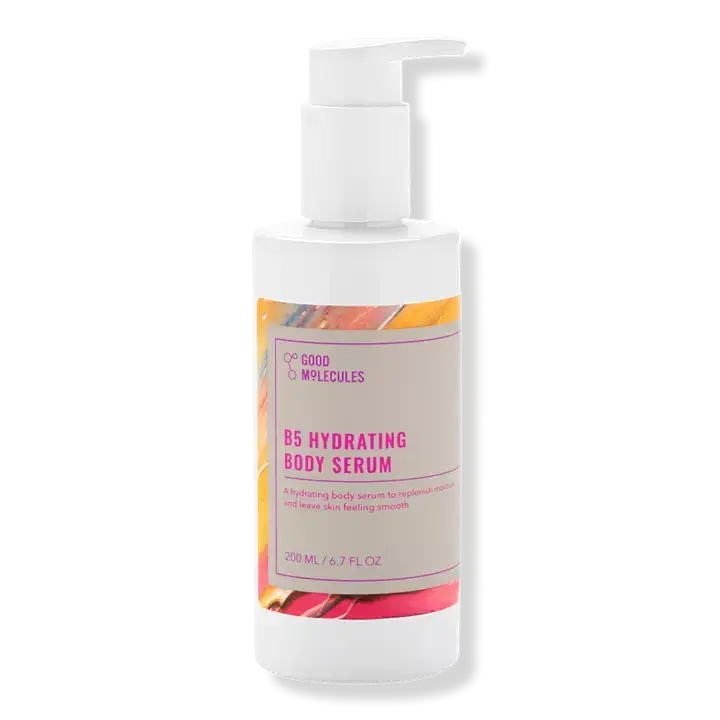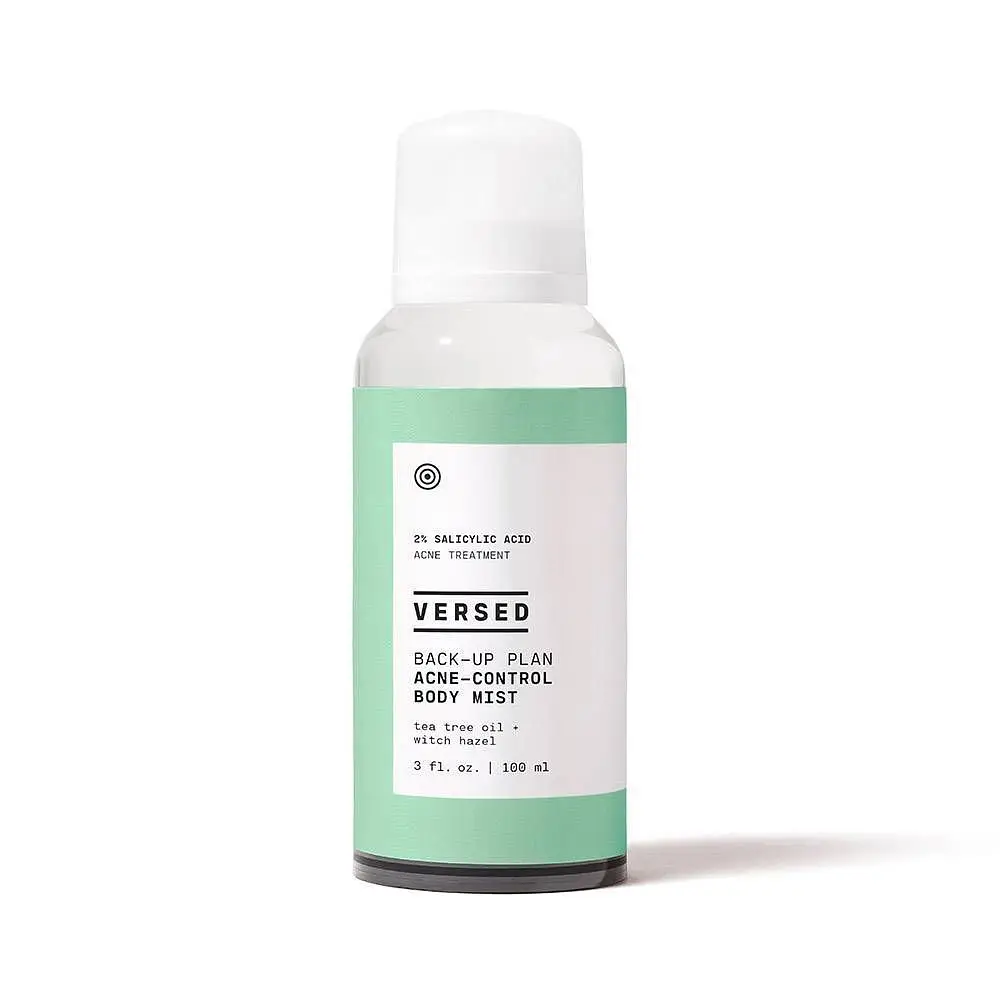Products Scan Our science '%20fill='black'/%3e%3c/svg%3e)
Skincare 
Bath & Body 
Make up 
Trending 
Skincare
Moisturizers
Treatments
Cleansers
Eye Care
Bath & Body
Make up
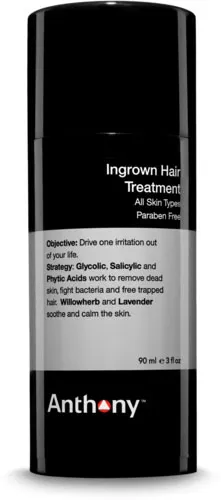
Hover to see details. On mobile? Tap for ingredient stories!
Full Ingredient List (INCI):
































According to CreamScan analysis, Anthony Ingrown Hair Treatment is lightly moisturizing, with a moisturizing rating of 3.0 out of 10.
Is it more humectant or occlusive? Purely humectant. It has zero occlusivity (we didn't find any occlusive ingredients on the ingredient list) and a high humectancy of 6.0 out of 10, primarily due to the high content of Propylene Glycol (est. ≈5.0%).
This humectant-rich product, when used alone as a moisturizer, is well-suited for oily skin, providing moderate hydration in a lightweight, fast-absorbing formula without any occlusive ingredients.
📌 Certain studies suggest that humectants alone may not effectively moisturize the skin. If you use this product as your only moisturizer, we recommend following it with one that contains at least some occlusive ingredients.
But it’s not limited to oily skin - such a humectant enhancement will also positively contribute to the moisturizing efficacy of any skincare routine when used as a step before applying the main moisturizer. This type of formulation is typically used in serums, where a light, fast-absorbing texture is key.
Please refer to the Ratings section below for details of the moisturizing rating calculation.
📌 Please note that this is not a complete list of benefits. We are in the process of enhancing our model to incorporate anti-pigmentation, exfoliation and anti-acne ratings.
This product contains glycolic acid, a popular AHA known for its ability to exfoliate and brighten the skin. Its action works by removing dead skin cells, revealing new, more delicate skin that is particularly vulnerable to sun damage.
As a result, using products with glycolic acid, regardless of concentration, may increase the skin's sensitivity, making it more prone to sunburn or irritation when exposed to UV rays.
To counteract this increased sun sensitivity, apply a broad-spectrum sunscreen with at least SPF 30 daily to protect your skin during glycolic acid treatment.
📌 Please always check the manufacturer's instructions for using the product, either on their website or product label.
While humectants are highly effective at attracting water to the skin, studies (J. N. Kraft, C. W. Lynde) suggest they may not be efficient when used alone.
One major drawback of purely humectant moisturization is that the water attracted by humectants to the upper layers of the skin can evaporate completely into the environment through transepidermal water loss (TEWL). Adding occlusive ingredients helps seal this moisture into the skin and prevent further water loss.
If you’re using Anthony Ingrown Hair Treatment as your only moisturizer, consider pairing it with one that contains at least some occlusive ingredients, such as oils, butters, or silicones. These work alongside humectants to create a protective barrier, locking in hydration and ensuring longer-lasting moisturization. The amount of occlusive needed depends on your skin type - the drier the skin, the more occlusives it requires.
If this product is used not as a standalone moisturizer but as part of your skincare routine, such as a toner or serum, it should be applied before your main moisturizer (unless it's a sunscreen), which will provide the necessary occlusivity on top of it.
|
Est. %
The Estimated % is our algorithm-based assumption about an ingredient's concentration in a formula. Learn more The Estimated % is our algorithm-based assumption about an ingredient's concentration in a formula. Learn more | Ingredient | Origin | Functions | |
|---|---|---|---|---|
| 75 | Water  The most used ingredient in skincare. Its concentration defines the product texture: rich creams may have about 50% of water while a light jelly about 90%. Water doesn’t moisturize the skin by itself and is used in skincare as a solvent for other ingredients. Water  The most used ingredient in skincare. Its concentration defines the product texture: rich creams may have about 50% of water while a light jelly about 90%. Water doesn’t moisturize the skin by itself and is used in skincare as a solvent for other ingredients. | Naturally occurring These are ingredients initially present in nature, such as elements (Zinc, Gold, or Silver), minerals, or water. Naturally occurring These are ingredients initially present in nature, such as elements (Zinc, Gold, or Silver), minerals, or water. | Formula helper
Formula helper
| |
| 7.5 | SD Alcohol 40-B  A natural ingredient containing a denaturant to discourage drinking. SD Alcohol 40-B  A natural ingredient containing a denaturant to discourage drinking. | Botanical Ingredients derived from plants, mosses, and lichens: extracts, oils, powders, juices and other types of processed plant materials. Botanical Ingredients derived from plants, mosses, and lichens: extracts, oils, powders, juices and other types of processed plant materials. Synthetic All kinds of ingredients formulated or produced by a chemical process, or those that have a chemical modification in their structure. Synthetic All kinds of ingredients formulated or produced by a chemical process, or those that have a chemical modification in their structure. | Astringent Astringent ingredients provide the skin with a tightened feeling, help to reduce the appearance of large pores, and assist in the healing of small cuts and wounds. Astringent Astringent ingredients provide the skin with a tightened feeling, help to reduce the appearance of large pores, and assist in the healing of small cuts and wounds. Formula helper
Formula helper
| |
| 5 | Propylene Glycol  A clear, thick, odorless liquid of synthetic origin. Its main function is to stabilize cosmetic products exposed to varying temperatures. It is also a moderately strong humectant with similar properties to glycerin. Propylene Glycol  A clear, thick, odorless liquid of synthetic origin. Its main function is to stabilize cosmetic products exposed to varying temperatures. It is also a moderately strong humectant with similar properties to glycerin. | Botanical Ingredients derived from plants, mosses, and lichens: extracts, oils, powders, juices and other types of processed plant materials. Botanical Ingredients derived from plants, mosses, and lichens: extracts, oils, powders, juices and other types of processed plant materials. Synthetic All kinds of ingredients formulated or produced by a chemical process, or those that have a chemical modification in their structure. Synthetic All kinds of ingredients formulated or produced by a chemical process, or those that have a chemical modification in their structure. | Moisturizing (Humectant) Humectants are moisturizing ingredients that draw moisture to the skin, either from deeper layers or from the environment (when it's humid). Moisturizing (Humectant) Humectants are moisturizing ingredients that draw moisture to the skin, either from deeper layers or from the environment (when it's humid). Fragrance Fragrance ingredients add scent to a product or hide ('mask') the undesired aroma of other ingredients. Fragrance Fragrance ingredients add scent to a product or hide ('mask') the undesired aroma of other ingredients. Formula helper
Formula helper
| |
| 3 | Glycolic Acid  The second most used AHA (after lactic acid) known for its potent exfoliating and smoothing effects. It increases skin cell turnover, which is beneficial for treating acne. When used in peels, glycolic acid has confirmed anti-wrinkle efficacy. Glycolic Acid  The second most used AHA (after lactic acid) known for its potent exfoliating and smoothing effects. It increases skin cell turnover, which is beneficial for treating acne. When used in peels, glycolic acid has confirmed anti-wrinkle efficacy. | Synthetic All kinds of ingredients formulated or produced by a chemical process, or those that have a chemical modification in their structure. Synthetic All kinds of ingredients formulated or produced by a chemical process, or those that have a chemical modification in their structure. | Anti-Acne Anti-acne agents treat acne blemishes, blackheads, and whiteheads. Anti-Acne Anti-acne agents treat acne blemishes, blackheads, and whiteheads. Exfoliant Exfoliants remove dead skin cells from the surface of the skin via acid-based chemical reactions (e.g., AHA or BHA). Exfoliant Exfoliants remove dead skin cells from the surface of the skin via acid-based chemical reactions (e.g., AHA or BHA). Formula helper
Formula helper
| |
| 2.5 | Phytic Acid  Phytic acid is found in rice and is seen as a cousin of alpha-hydroxy acids. As a chelator, it can bind to certain metals that may cause discoloration in products or reduce the efficacy of other ingredients. Phytic Acid  Phytic acid is found in rice and is seen as a cousin of alpha-hydroxy acids. As a chelator, it can bind to certain metals that may cause discoloration in products or reduce the efficacy of other ingredients. | Botanical Ingredients derived from plants, mosses, and lichens: extracts, oils, powders, juices and other types of processed plant materials. Botanical Ingredients derived from plants, mosses, and lichens: extracts, oils, powders, juices and other types of processed plant materials. Synthetic All kinds of ingredients formulated or produced by a chemical process, or those that have a chemical modification in their structure. Synthetic All kinds of ingredients formulated or produced by a chemical process, or those that have a chemical modification in their structure. | Exfoliant Exfoliants remove dead skin cells from the surface of the skin via acid-based chemical reactions (e.g., AHA or BHA). Exfoliant Exfoliants remove dead skin cells from the surface of the skin via acid-based chemical reactions (e.g., AHA or BHA). Formula helper
Formula helper
| |
| 2 | Salicylic Acid  This effective peeling and anti-inflammatory BHA is used as an anti-acne agent and works by breaking down the junctions between dead skin cells. This results in the peeling of dead skin and the unclogging of pores. Salicylic Acid  This effective peeling and anti-inflammatory BHA is used as an anti-acne agent and works by breaking down the junctions between dead skin cells. This results in the peeling of dead skin and the unclogging of pores. | Synthetic All kinds of ingredients formulated or produced by a chemical process, or those that have a chemical modification in their structure. Synthetic All kinds of ingredients formulated or produced by a chemical process, or those that have a chemical modification in their structure. | Anti-Acne Anti-acne agents treat acne blemishes, blackheads, and whiteheads. Anti-Acne Anti-acne agents treat acne blemishes, blackheads, and whiteheads. Exfoliant Exfoliants remove dead skin cells from the surface of the skin via acid-based chemical reactions (e.g., AHA or BHA). Exfoliant Exfoliants remove dead skin cells from the surface of the skin via acid-based chemical reactions (e.g., AHA or BHA). Soothing Soothing ingredients reduce the signs of sensitivity in irritated and inflamed skin. This includes anti-inflammatory ingredients, anti-itch agents, and topical analgesics. Soothing Soothing ingredients reduce the signs of sensitivity in irritated and inflamed skin. This includes anti-inflammatory ingredients, anti-itch agents, and topical analgesics. Anti-Seborrheic Anti-seborrheic ingredients help to treat seborrheic dermatitis. Anti-Seborrheic Anti-seborrheic ingredients help to treat seborrheic dermatitis. Fragrance Fragrance ingredients add scent to a product or hide ('mask') the undesired aroma of other ingredients. Fragrance Fragrance ingredients add scent to a product or hide ('mask') the undesired aroma of other ingredients. Preservative Preservatives prevent the growth of bacteria and fungi in a product. Preservative Preservatives prevent the growth of bacteria and fungi in a product. Formula helper
Formula helper
| |
| 1.5 | Epilobium Angustifolium Flower/Leaf/Stem Extract  An extract from a plant known in North America as Fireweed and in Europe as Willowherb. It is commonly used in traditional herbal medicine. Due to its abundant content of tannins and flavonoids, it has great astringent and antioxidant properties. Epilobium Angustifolium Flower/Leaf/Stem Extract  An extract from a plant known in North America as Fireweed and in Europe as Willowherb. It is commonly used in traditional herbal medicine. Due to its abundant content of tannins and flavonoids, it has great astringent and antioxidant properties. | Botanical Ingredients derived from plants, mosses, and lichens: extracts, oils, powders, juices and other types of processed plant materials. Botanical Ingredients derived from plants, mosses, and lichens: extracts, oils, powders, juices and other types of processed plant materials. | Antioxidant Antioxidants reduce the oxidative stress caused by free radicals and prevent accelerated skin aging. Antioxidant Antioxidants reduce the oxidative stress caused by free radicals and prevent accelerated skin aging. Astringent Astringent ingredients provide the skin with a tightened feeling, help to reduce the appearance of large pores, and assist in the healing of small cuts and wounds. Astringent Astringent ingredients provide the skin with a tightened feeling, help to reduce the appearance of large pores, and assist in the healing of small cuts and wounds. | |
| 1.3 | Lavandula Angustifolia (Lavender) Oil  An essential oil derived from common, or true, lavender. It is used in skincare for its lovely, calming scent. Like all essential oils, however, it may cause a contact skin allergy in more sensitive individuals. Lavandula Angustifolia (Lavender) Oil  An essential oil derived from common, or true, lavender. It is used in skincare for its lovely, calming scent. Like all essential oils, however, it may cause a contact skin allergy in more sensitive individuals. | Botanical Ingredients derived from plants, mosses, and lichens: extracts, oils, powders, juices and other types of processed plant materials. Botanical Ingredients derived from plants, mosses, and lichens: extracts, oils, powders, juices and other types of processed plant materials. | Fragrance Fragrance ingredients add scent to a product or hide ('mask') the undesired aroma of other ingredients. Fragrance Fragrance ingredients add scent to a product or hide ('mask') the undesired aroma of other ingredients. | |
| 1 | Saccharide Isomerate  A naturally-derived humectant that provides moisturization at low levels and is less sticky than other humectants like glycerin. Saccharide Isomerate  A naturally-derived humectant that provides moisturization at low levels and is less sticky than other humectants like glycerin. | Botanical Ingredients derived from plants, mosses, and lichens: extracts, oils, powders, juices and other types of processed plant materials. Botanical Ingredients derived from plants, mosses, and lichens: extracts, oils, powders, juices and other types of processed plant materials. Synthetic All kinds of ingredients formulated or produced by a chemical process, or those that have a chemical modification in their structure. Synthetic All kinds of ingredients formulated or produced by a chemical process, or those that have a chemical modification in their structure. | Moisturizing (Humectant) Humectants are moisturizing ingredients that draw moisture to the skin, either from deeper layers or from the environment (when it's humid). Moisturizing (Humectant) Humectants are moisturizing ingredients that draw moisture to the skin, either from deeper layers or from the environment (when it's humid). | |
| 0.3 | Hydroxyethylcellulose  A naturally-derived thickener that can form clear gel textures without the slimy feeling, unlike some other natural gel-formers. Hydroxyethylcellulose  A naturally-derived thickener that can form clear gel textures without the slimy feeling, unlike some other natural gel-formers. | Botanical Ingredients derived from plants, mosses, and lichens: extracts, oils, powders, juices and other types of processed plant materials. Botanical Ingredients derived from plants, mosses, and lichens: extracts, oils, powders, juices and other types of processed plant materials. Synthetic All kinds of ingredients formulated or produced by a chemical process, or those that have a chemical modification in their structure. Synthetic All kinds of ingredients formulated or produced by a chemical process, or those that have a chemical modification in their structure. | Formula helper
Formula helper
| |
| 0.3 | Ammonium Hydroxide  A weakly basic ingredient that can adjust pH to a higher level. Ammonium Hydroxide  A weakly basic ingredient that can adjust pH to a higher level. | Synthetic All kinds of ingredients formulated or produced by a chemical process, or those that have a chemical modification in their structure. Synthetic All kinds of ingredients formulated or produced by a chemical process, or those that have a chemical modification in their structure. | Formula helper
Formula helper
| |
| 0.3 | Tetrasodium EDTA  One of the most common synthetic chelators. It can reduce the 'hardness' of water and so is often used in rinse-off products. Tetrasodium EDTA  One of the most common synthetic chelators. It can reduce the 'hardness' of water and so is often used in rinse-off products. | Synthetic All kinds of ingredients formulated or produced by a chemical process, or those that have a chemical modification in their structure. Synthetic All kinds of ingredients formulated or produced by a chemical process, or those that have a chemical modification in their structure. | Formula helper
Formula helper
| |
| 0.3 | Citric Acid  A gently exfoliating AHA that helps to remove the top layer of dead skin cells. In comparison to other AHAs, citric acid has been shown to be one of the least effective. It is also very commonly used as a stabilizing and pH-controlling agent. Citric Acid  A gently exfoliating AHA that helps to remove the top layer of dead skin cells. In comparison to other AHAs, citric acid has been shown to be one of the least effective. It is also very commonly used as a stabilizing and pH-controlling agent. | Botanical Ingredients derived from plants, mosses, and lichens: extracts, oils, powders, juices and other types of processed plant materials. Botanical Ingredients derived from plants, mosses, and lichens: extracts, oils, powders, juices and other types of processed plant materials. Synthetic All kinds of ingredients formulated or produced by a chemical process, or those that have a chemical modification in their structure. Synthetic All kinds of ingredients formulated or produced by a chemical process, or those that have a chemical modification in their structure. | Exfoliant Exfoliants remove dead skin cells from the surface of the skin via acid-based chemical reactions (e.g., AHA or BHA). Exfoliant Exfoliants remove dead skin cells from the surface of the skin via acid-based chemical reactions (e.g., AHA or BHA). Formula helper
Formula helper
| |
| 0.3 | Sodium Citrate  A salt of citric acid that has a salty and tart flavor and is used as a fragrance. It is mildly basic, meaning that its addition to a skincare product can adjust the pH upward. Sodium Citrate  A salt of citric acid that has a salty and tart flavor and is used as a fragrance. It is mildly basic, meaning that its addition to a skincare product can adjust the pH upward. | Botanical Ingredients derived from plants, mosses, and lichens: extracts, oils, powders, juices and other types of processed plant materials. Botanical Ingredients derived from plants, mosses, and lichens: extracts, oils, powders, juices and other types of processed plant materials. Synthetic All kinds of ingredients formulated or produced by a chemical process, or those that have a chemical modification in their structure. Synthetic All kinds of ingredients formulated or produced by a chemical process, or those that have a chemical modification in their structure. | Fragrance Fragrance ingredients add scent to a product or hide ('mask') the undesired aroma of other ingredients. Fragrance Fragrance ingredients add scent to a product or hide ('mask') the undesired aroma of other ingredients. Formula helper
Formula helper
| |
| 0.3 | Blue 1 (CI 42090)  A synthetic dye commonly known as Brilliant Blue FCF that produces rich blue colors for various cosmetic uses. FD&C Blue #1 can also be found in foods, medications, and dietary supplements, as it is considered non-toxic and safe for use. Blue 1 (CI 42090)  A synthetic dye commonly known as Brilliant Blue FCF that produces rich blue colors for various cosmetic uses. FD&C Blue #1 can also be found in foods, medications, and dietary supplements, as it is considered non-toxic and safe for use. | Synthetic All kinds of ingredients formulated or produced by a chemical process, or those that have a chemical modification in their structure. Synthetic All kinds of ingredients formulated or produced by a chemical process, or those that have a chemical modification in their structure. | Colorant Colorants give color to skincare products. Colorant Colorants give color to skincare products. | |
| 0.3 | Yellow 5 (CI 19140)  A bright yellow colorant that is often also listed as FD&C Yellow 5. Yellow 5 (CI 19140)  A bright yellow colorant that is often also listed as FD&C Yellow 5. | Synthetic All kinds of ingredients formulated or produced by a chemical process, or those that have a chemical modification in their structure. Synthetic All kinds of ingredients formulated or produced by a chemical process, or those that have a chemical modification in their structure. | Colorant Colorants give color to skincare products. Colorant Colorants give color to skincare products. | |
| 75  Water Function: Formula helper Formula helper
Formula helper Formula helper
Origin: Naturally occurring Naturally occurring These are ingredients initially present in nature, such as elements (Zinc, Gold, or Silver), minerals, or water. Naturally occurring Naturally occurring These are ingredients initially present in nature, such as elements (Zinc, Gold, or Silver), minerals, or water. |
| 7.5  SD Alcohol 40-B Function: Astringent, Astringent Astringent ingredients provide the skin with a tightened feeling, help to reduce the appearance of large pores, and assist in the healing of small cuts and wounds. Astringent, Astringent Astringent ingredients provide the skin with a tightened feeling, help to reduce the appearance of large pores, and assist in the healing of small cuts and wounds. Formula helper Formula helper
Formula helper Formula helper
Origin: Botanical, Botanical Ingredients derived from plants, mosses, and lichens: extracts, oils, powders, juices and other types of processed plant materials. Botanical, Botanical Ingredients derived from plants, mosses, and lichens: extracts, oils, powders, juices and other types of processed plant materials. Synthetic Synthetic All kinds of ingredients formulated or produced by a chemical process, or those that have a chemical modification in their structure. Synthetic Synthetic All kinds of ingredients formulated or produced by a chemical process, or those that have a chemical modification in their structure. |
| 5  Propylene Glycol Function: Moisturizing (Humectant), Moisturizing (Humectant) Humectants are moisturizing ingredients that draw moisture to the skin, either from deeper layers or from the environment (when it's humid). Moisturizing (Humectant), Moisturizing (Humectant) Humectants are moisturizing ingredients that draw moisture to the skin, either from deeper layers or from the environment (when it's humid). Fragrance, Fragrance Fragrance ingredients add scent to a product or hide ('mask') the undesired aroma of other ingredients. Fragrance, Fragrance Fragrance ingredients add scent to a product or hide ('mask') the undesired aroma of other ingredients. Formula helper Formula helper
Formula helper Formula helper
Origin: Botanical, Botanical Ingredients derived from plants, mosses, and lichens: extracts, oils, powders, juices and other types of processed plant materials. Botanical, Botanical Ingredients derived from plants, mosses, and lichens: extracts, oils, powders, juices and other types of processed plant materials. Synthetic Synthetic All kinds of ingredients formulated or produced by a chemical process, or those that have a chemical modification in their structure. Synthetic Synthetic All kinds of ingredients formulated or produced by a chemical process, or those that have a chemical modification in their structure. |
| 3  Glycolic Acid Function: Anti-Acne, Anti-Acne Anti-acne agents treat acne blemishes, blackheads, and whiteheads. Anti-Acne, Anti-Acne Anti-acne agents treat acne blemishes, blackheads, and whiteheads. Exfoliant, Exfoliant Exfoliants remove dead skin cells from the surface of the skin via acid-based chemical reactions (e.g., AHA or BHA). Exfoliant, Exfoliant Exfoliants remove dead skin cells from the surface of the skin via acid-based chemical reactions (e.g., AHA or BHA). Formula helper Formula helper
Formula helper Formula helper
Origin: Synthetic Synthetic All kinds of ingredients formulated or produced by a chemical process, or those that have a chemical modification in their structure. Synthetic Synthetic All kinds of ingredients formulated or produced by a chemical process, or those that have a chemical modification in their structure. |
| 2.5  Phytic Acid Function: Exfoliant, Exfoliant Exfoliants remove dead skin cells from the surface of the skin via acid-based chemical reactions (e.g., AHA or BHA). Exfoliant, Exfoliant Exfoliants remove dead skin cells from the surface of the skin via acid-based chemical reactions (e.g., AHA or BHA). Formula helper Formula helper
Formula helper Formula helper
Origin: Botanical, Botanical Ingredients derived from plants, mosses, and lichens: extracts, oils, powders, juices and other types of processed plant materials. Botanical, Botanical Ingredients derived from plants, mosses, and lichens: extracts, oils, powders, juices and other types of processed plant materials. Synthetic Synthetic All kinds of ingredients formulated or produced by a chemical process, or those that have a chemical modification in their structure. Synthetic Synthetic All kinds of ingredients formulated or produced by a chemical process, or those that have a chemical modification in their structure. |
| 2  Salicylic Acid Function: Anti-Acne, Anti-Acne Anti-acne agents treat acne blemishes, blackheads, and whiteheads. Anti-Acne, Anti-Acne Anti-acne agents treat acne blemishes, blackheads, and whiteheads. Exfoliant, Exfoliant Exfoliants remove dead skin cells from the surface of the skin via acid-based chemical reactions (e.g., AHA or BHA). Exfoliant, Exfoliant Exfoliants remove dead skin cells from the surface of the skin via acid-based chemical reactions (e.g., AHA or BHA). Soothing, Soothing Soothing ingredients reduce the signs of sensitivity in irritated and inflamed skin. This includes anti-inflammatory ingredients, anti-itch agents, and topical analgesics. Soothing, Soothing Soothing ingredients reduce the signs of sensitivity in irritated and inflamed skin. This includes anti-inflammatory ingredients, anti-itch agents, and topical analgesics. Anti-Seborrheic, Anti-Seborrheic Anti-seborrheic ingredients help to treat seborrheic dermatitis. Anti-Seborrheic, Anti-Seborrheic Anti-seborrheic ingredients help to treat seborrheic dermatitis. Fragrance, Fragrance Fragrance ingredients add scent to a product or hide ('mask') the undesired aroma of other ingredients. Fragrance, Fragrance Fragrance ingredients add scent to a product or hide ('mask') the undesired aroma of other ingredients. Preservative, Preservative Preservatives prevent the growth of bacteria and fungi in a product. Preservative, Preservative Preservatives prevent the growth of bacteria and fungi in a product. Formula helper Formula helper
Formula helper Formula helper
Origin: Synthetic Synthetic All kinds of ingredients formulated or produced by a chemical process, or those that have a chemical modification in their structure. Synthetic Synthetic All kinds of ingredients formulated or produced by a chemical process, or those that have a chemical modification in their structure. |
| 1.5  Epilobium Angustifolium Flower/Leaf/Stem Extract Function: Antioxidant, Antioxidant Antioxidants reduce the oxidative stress caused by free radicals and prevent accelerated skin aging. Antioxidant, Antioxidant Antioxidants reduce the oxidative stress caused by free radicals and prevent accelerated skin aging. Astringent Astringent Astringent ingredients provide the skin with a tightened feeling, help to reduce the appearance of large pores, and assist in the healing of small cuts and wounds. Astringent Astringent Astringent ingredients provide the skin with a tightened feeling, help to reduce the appearance of large pores, and assist in the healing of small cuts and wounds. Origin: Botanical Botanical Ingredients derived from plants, mosses, and lichens: extracts, oils, powders, juices and other types of processed plant materials. Botanical Botanical Ingredients derived from plants, mosses, and lichens: extracts, oils, powders, juices and other types of processed plant materials. |
| 1.3  Lavandula Angustifolia (Lavender) Oil Function: Fragrance Fragrance Fragrance ingredients add scent to a product or hide ('mask') the undesired aroma of other ingredients. Fragrance Fragrance Fragrance ingredients add scent to a product or hide ('mask') the undesired aroma of other ingredients. Origin: Botanical Botanical Ingredients derived from plants, mosses, and lichens: extracts, oils, powders, juices and other types of processed plant materials. Botanical Botanical Ingredients derived from plants, mosses, and lichens: extracts, oils, powders, juices and other types of processed plant materials. |
| 1  Saccharide Isomerate Function: Moisturizing (Humectant) Moisturizing (Humectant) Humectants are moisturizing ingredients that draw moisture to the skin, either from deeper layers or from the environment (when it's humid). Moisturizing (Humectant) Moisturizing (Humectant) Humectants are moisturizing ingredients that draw moisture to the skin, either from deeper layers or from the environment (when it's humid). Origin: Botanical, Botanical Ingredients derived from plants, mosses, and lichens: extracts, oils, powders, juices and other types of processed plant materials. Botanical, Botanical Ingredients derived from plants, mosses, and lichens: extracts, oils, powders, juices and other types of processed plant materials. Synthetic Synthetic All kinds of ingredients formulated or produced by a chemical process, or those that have a chemical modification in their structure. Synthetic Synthetic All kinds of ingredients formulated or produced by a chemical process, or those that have a chemical modification in their structure. |
| 0.3  Hydroxyethylcellulose Function: Formula helper Formula helper
Formula helper Formula helper
Origin: Botanical, Botanical Ingredients derived from plants, mosses, and lichens: extracts, oils, powders, juices and other types of processed plant materials. Botanical, Botanical Ingredients derived from plants, mosses, and lichens: extracts, oils, powders, juices and other types of processed plant materials. Synthetic Synthetic All kinds of ingredients formulated or produced by a chemical process, or those that have a chemical modification in their structure. Synthetic Synthetic All kinds of ingredients formulated or produced by a chemical process, or those that have a chemical modification in their structure. |
| 0.3  Ammonium Hydroxide Function: Formula helper Formula helper
Formula helper Formula helper
Origin: Synthetic Synthetic All kinds of ingredients formulated or produced by a chemical process, or those that have a chemical modification in their structure. Synthetic Synthetic All kinds of ingredients formulated or produced by a chemical process, or those that have a chemical modification in their structure. |
| 0.3  Tetrasodium EDTA Function: Formula helper Formula helper
Formula helper Formula helper
Origin: Synthetic Synthetic All kinds of ingredients formulated or produced by a chemical process, or those that have a chemical modification in their structure. Synthetic Synthetic All kinds of ingredients formulated or produced by a chemical process, or those that have a chemical modification in their structure. |
| 0.3  Citric Acid Function: Exfoliant, Exfoliant Exfoliants remove dead skin cells from the surface of the skin via acid-based chemical reactions (e.g., AHA or BHA). Exfoliant, Exfoliant Exfoliants remove dead skin cells from the surface of the skin via acid-based chemical reactions (e.g., AHA or BHA). Formula helper Formula helper
Formula helper Formula helper
Origin: Botanical, Botanical Ingredients derived from plants, mosses, and lichens: extracts, oils, powders, juices and other types of processed plant materials. Botanical, Botanical Ingredients derived from plants, mosses, and lichens: extracts, oils, powders, juices and other types of processed plant materials. Synthetic Synthetic All kinds of ingredients formulated or produced by a chemical process, or those that have a chemical modification in their structure. Synthetic Synthetic All kinds of ingredients formulated or produced by a chemical process, or those that have a chemical modification in their structure. |
| 0.3  Sodium Citrate Function: Fragrance, Fragrance Fragrance ingredients add scent to a product or hide ('mask') the undesired aroma of other ingredients. Fragrance, Fragrance Fragrance ingredients add scent to a product or hide ('mask') the undesired aroma of other ingredients. Formula helper Formula helper
Formula helper Formula helper
Origin: Botanical, Botanical Ingredients derived from plants, mosses, and lichens: extracts, oils, powders, juices and other types of processed plant materials. Botanical, Botanical Ingredients derived from plants, mosses, and lichens: extracts, oils, powders, juices and other types of processed plant materials. Synthetic Synthetic All kinds of ingredients formulated or produced by a chemical process, or those that have a chemical modification in their structure. Synthetic Synthetic All kinds of ingredients formulated or produced by a chemical process, or those that have a chemical modification in their structure. |
| 0.3  Blue 1 (CI 42090) Function: Colorant Colorant Colorants give color to skincare products. Colorant Colorant Colorants give color to skincare products. Origin: Synthetic Synthetic All kinds of ingredients formulated or produced by a chemical process, or those that have a chemical modification in their structure. Synthetic Synthetic All kinds of ingredients formulated or produced by a chemical process, or those that have a chemical modification in their structure. |
| 0.3  Yellow 5 (CI 19140) Function: Colorant Colorant Colorants give color to skincare products. Colorant Colorant Colorants give color to skincare products. Origin: Synthetic Synthetic All kinds of ingredients formulated or produced by a chemical process, or those that have a chemical modification in their structure. Synthetic Synthetic All kinds of ingredients formulated or produced by a chemical process, or those that have a chemical modification in their structure. |
